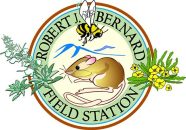Adams, Tessa (2016)
Effects of fire on ant assemblages in California sage scrub.
Bachelor of Arts, Pomona College, Biology.
Advisor: Wallace Meyer.
California sage scrub (CSS), the endangered ecosystem type of low elevation areas in Southern California, is increasingly threatened by human development, altered fire regimes, and type conversion to non-native grasslands. Much research has been focused on the recovery of plant and mammal species in CSS habitats following fire, but very little is known about the ability of ground-dwelling arthropods to recover following fire. In this study, we examined the effect of fire on the recovery of ant assemblages in a patch of recovering CSS, using ant assemblages from adjacent intact CSS and non-native grassland habitats as controls. Overall, ant assemblages were resilient to fire. Immediately following fire, no differences in ant assemblages were observed in the burned area despite seasonal shifts in ant assemblages in both control habitat types. However, ant assemblages in the burned area were able to recover one year following fire. Inter-annual declines in ant abundances and richness in both the burned and CSS habitats are suggestive that native ant species may be more susceptible to the effects of a long-term drought. Since ant assemblages seem resilient to the effects of fire but are significantly influenced by type conversion to non-native grasslands, this study suggests that no management action is required to maintain native ant assemblages unless the fire disturbance facilitates type-conversion.
